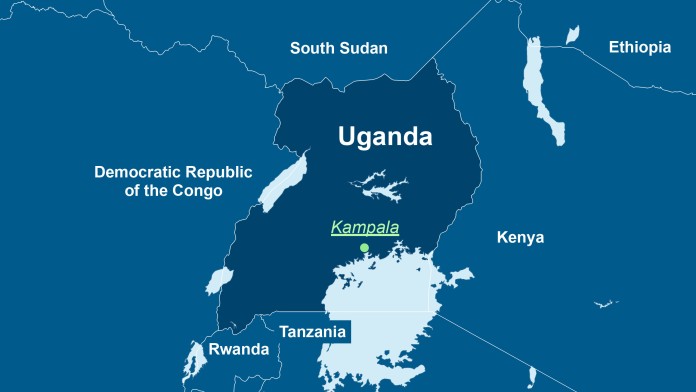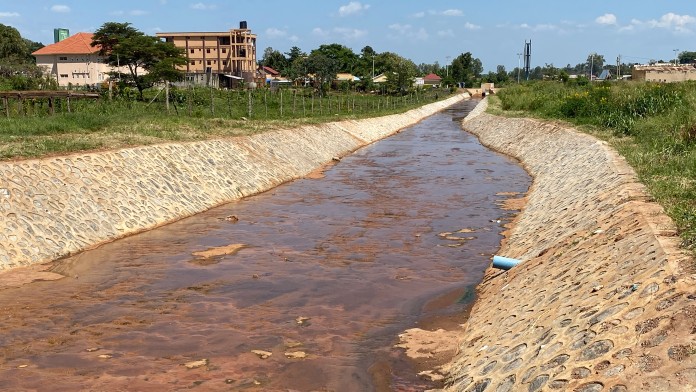
As of: 12/2022
With over 200,000 inhabitants, Gulu is now the second largest city in Uganda after the capital Kampala. The unofficial settlement areas in particular have inadequate infrastructure: there is a lack of drinking water, sanitation and regulated waste disposal. During droughts the water shortage is striking, while rainstorms are often followed by flooding, especially in the unofficial settlements in lower-lying neighbourhoods. This is where KfW is working to rapidly improve water supply at reasonable prices. Sanitary facilities and a waste disposal system will also be set up. KfW also facilitates the planning process for urban infrastructure. The aim here is to sustainably improve the living conditions of residents in the affected areas in Gulu.

Gulu was at the heart of decades of conflict between the Ugandan military and the rebel organisation the Lord Resistance Army (LRA). The city became known as the destination of vulnerable children who stayed there to avoid forced recruitment as child soldiers by the LRA. Conflicts have now ended and the security situation is stable. But the municipality’s infrastructure is completely overburdened. A prolonged drought between 2014 and 2016 led to major water shortages. Women waited in lines for up to twelve hours at standpipes to get water that was often contaminated. The entire economic cycle came to a standstill.
There is still an acute shortage of clean drinking water. The municipality’s existing natural water resources are not sufficient to supply the population. The proportion of the population with access to clean water is significantly below the national average.
In times of flooding during the short rainy season, the low-lying unofficial settlements are flooded. Houses are destroyed and diseases thrive. The rest of the city’s infrastructure is also overburdened, both in terms of sewage disposal and waste management.
For the first time in Uganda, an integrated programme is being implemented in Gulu that includes measures from the areas of water and sanitation, surface drainage, waste disposal and the development of a land use plan.
KfW has adopted a short-term approach to cover immediate needs combined with a long-term approach for infrastructure development.
Initially, immediate measures are being put in place to quickly improve the supply to the population. These include the rehabilitation of the water supply and sewage network. The existing service reservoir near the city has been cleared of sludge and extended to allow it to collect more rain during the rainy season. Public drinking water taps are being built. The existing clarification pond was rehabilitated and expanded to include a plant for the treatment of septic sludge. The water treatment facility was expanded to double its capacity from 5,000 cubic meters per day to 10,000. However, all the measures taken together are only enough to cover around half of the fast-growing city’s water demand.
Therefore, the development of the Nile as a water source is being prepared at the same time. An extraction station and water treatment facility will be built on the river 75 kilometres away in Karuma. KfW is financing the planned pipeline from Karuma to Gulu on behalf of the World Bank. Six smaller municipalities along the pipeline will also be able to extract water from it.
The project’s integrated approach also includes sewage disposal and waste management. The designation of a wetland, the planting of trees and the creation of drainage channels are intended to ensure that rainfall is collected during the rainy season and residential areas are protected.
Street cleaners receive training and equipment. The local landfill will be expanded and better equipped, for example with bulldozers and trucks.
A land use plan for Gulu is to be drawn up in order to ensure sustainable urban development in the future.
The people in Gulu, especially in unofficial settlements, are supplied with hygienically safe drinking water and pay a socially affordable price for it. The supply of sanitary facilities has been improved. Schools, markets and health centres have public sanitary facilities.
The waste disposal system has been expanded. Solid waste is collected in an environmentally safe landfill.
Informal settlement areas are better protected against flooding during the rainy season.
The population is better informed about hygiene measures.
The living conditions of the people in Gulu are sustainably improved.
The project contributes to the achievement of these following United Nations Sustainable Development Goals:
KfW Group
KfW Development Bank
Country sector Sub-Saharan Africa
Governance/Stabilisation & water